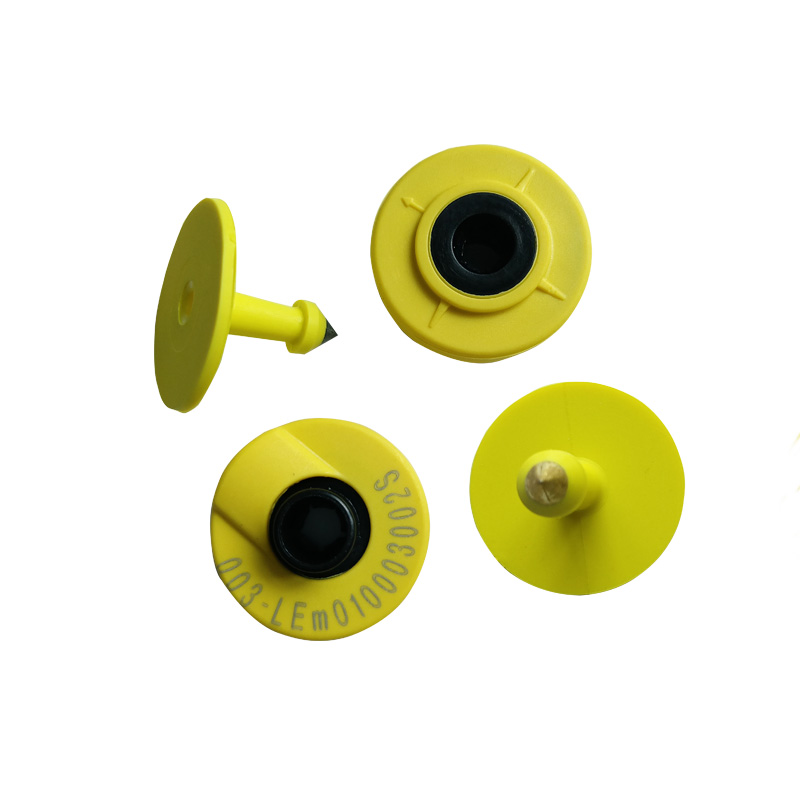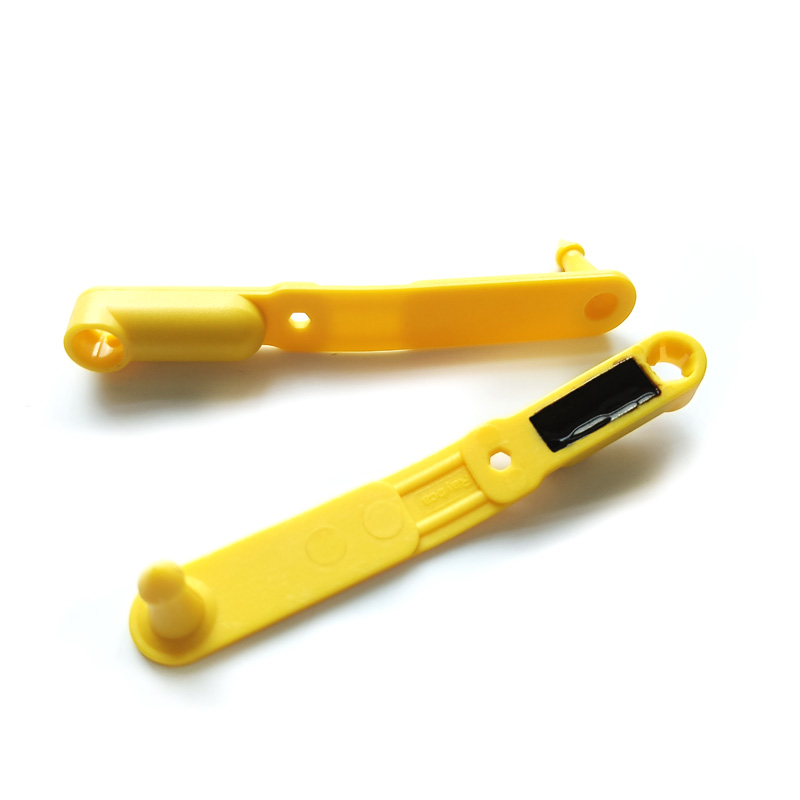
What Are RFID Ear Tags Used for in Animals?
Table of Contents
Introduction to RFID Ear Tags
This comprehensive guide explores how RFID Ear Tags are used for animal tracking, disease prevention, and regulatory compliance in agriculture. Whether you’re a rancher, veterinarian, or agricultural tech manager, this article explains exactly how Animal RFID Tags can streamline your workflow and protect your livestock.

What Are RFID Ear Tags and How Do They Work in Animals?
RFID Ear Tags are electronic identification devices placed on an animal’s ear. Each tag contains:
- A microchip that stores a unique ID
- An antenna that communicates via radio waves
- A durable enclosure for outdoor conditions
When scanned by an RFID reader, these tags transmit identification data wirelessly—no need to touch or handle the animal. This improves animal welfare and farm efficiency.
Unlike traditional Animal Ear Tags (like plastic visual tags or tattoos), RFID Ear Tags provide automated, reliable, and long-range identification with less human intervention.

Why Are RFID Ear Tags Crucial for Livestock Management?
In modern animal farming, tracking every individual animal is both essential and labor-intensive. RFID Ear Tags make this easier by enabling:
- Automated herd inventory
- Quick animal location
- Accurate breeding and health records
- Real-time monitoring in large, open environments
Animal RFID Tags are especially useful for large herds where visual tracking is impractical. With RFID, farmers can scan hundreds of animals in minutes—saving time, reducing labor costs, and improving decision-making.
How RFID Ear Tags Help Prevent Disease
Disease control is one of the most critical reasons to implement Animal RFID Tags.
If a cow or goat becomes sick, RFID technology enables:
- Quick identification of the animal
- Instant access to its health and movement records
- Traceback of animals it has been in contact with
In the U.S., the USDA’s Animal Disease Traceability Rule requires certain livestock (like cattle) to use RFID Ear Tags to track animal movement and respond rapidly to outbreaks.
RFID data supports faster containment, better decision-making, and protects both animal health and the food supply.
Types of RFID Ear Tags for Livestock
There are two major types of Animal RFID Tags used for ear tagging:
| Type | Description | Use Cases |
|---|---|---|
| Passive RFID Ear Tags | No battery, powered by the reader’s signal. Cost-effective and long-lasting. | Cattle, goats, pigs, sheep |
| Active RFID Ear Tags | Has a battery; transmits data independently over long distances | Open-field tracking, large herd movement monitoring |
Choosing the right tag depends on your herd size, budget, read-range needs, and compliance requirements.
👉 Browse the full Animal RFID Tags product line →
How Are RFID Ear Tags Applied to Livestock?
Applying an RFID Ear Tag is similar to installing a traditional Animal Ear Tag—but accuracy matters more.
Key Guidelines:
- Tag is placed in the middle third of the ear (not too close to the edge or skull)
- Use an RFID-compatible tag applicator
- Ensure proper alignment to avoid damage and optimize readability
Correct placement ensures signal integrity and reduces tag loss or damage.
Real-World Applications of RFID in Animal Tracking
RFID Ear Tags are used across various sectors:
- Dairy Farming
Track milk production, feeding schedules, and animal health. - Beef Ranching
Monitor grazing patterns, movement history, and meet USDA traceability standards. - Goat & Sheep Farms Use durable RFID tags for identification, breeding logs, and disease control.

How RFID Ear Tags Support Livestock Management Software?
RFID systems can be connected to digital livestock management platforms. This allows:
- Automated weight & growth logging
- Health record alerts
- Breeding and vaccination scheduling
- Location tracking & movement logs
Integrating RFID Ear Tags with cloud-based software enables smart farming, improving herd health and farm profitability.

Key Benefits of RFID Ear Tags
| Benefit | Why It Matters |
|---|---|
| ✅ Hands-free animal ID | Less stress on animals and staff |
| ✅ Real-time tracking | Know exactly where your animals are |
| ✅ Regulatory compliance | Meets USDA and ICAR identification rules |
| ✅ Data accuracy | Fewer human errors in recordkeeping |
| ✅ Operational savings | Reduces labor time and administrative overhead |
How RFID Meets USDA Compliance Requirements
In 2023, the USDA strengthened its requirement for RFID identification in cattle and bison. Compliant RFID Ear Tags:
- Must be tamper-resistant
- Should contain USDA-approved IDs
- Are readable by standard UHF or LF RFID systems
Using Animal RFID Tags ensures you’re compliant with national traceability mandates and supports future-readiness as regulations expand.
The Future of RFID in Animal Agriculture
RFID in livestock is evolving fast. Future developments include:
- Temperature-sensing RFID Ear Tags
- GPS-enabled tags for grazing pattern tracking
- IoT integration with smart gates, feeding stations, and wearables
- Predictive analytics for health monitoring
As these technologies become more affordable, Animal RFID Tags will be at the core of precision livestock farming worldwide.
Frequently Asked Questions (FAQ)
Do RFID tags work on animals with metal ear clips or piercings?
Yes, but metal near the RFID tag may slightly reduce read range. It’s best to avoid interference by choosing proper tag placement.
Are RFID Ear Tags safe for animals?
Yes. They are lightweight, biocompatible, and designed specifically for livestock environments. Approved Animal Ear Tags follow ISO and ICAR safety standards.
How long do RFID Ear Tags last?
Passive Animal RFID Tags typically last 5–10 years. Active tags depend on battery life but may last 2–5 years depending on usage.
Comments
RFID Ear Tags are transforming livestock management through accurate identification, traceability, disease prevention, and data-driven decision-making. Whether you’re managing a cattle ranch or a goat farm, investing in Animal RFID Tags ensures you’re future-ready, compliant, and efficient.

Ray Zhou
This article was written by Ray Zhou, an RFID technology expert with more than 10 years of industry experience.
Comments
Hot Products

RFID in Logistics: How to Eliminate RFID Misrouting and RFID Label Failures
RFID in logistics is more than just a tool to speed up processes. It has become a key part of how modern supply chains operate.

What Is RFID Waste Management
Imagine a city where every trash bin speaks — not literally — but through a tiny chip that tells the system when it’s full, when it’s emptied, and where it went. That’s what RFID waste management is doing today.

What are Bolt Seals and their Applications? | Complete Guide
In global trade and logistics, bolt seals play a crucial role in ensuring cargo security and compliance. These small but powerful devices are designed to lock shipping containers, trailers, and cargo doors with a tamper-evident mechanism.

What is an RFID Card Protector? Benefits, Use Cases, and Buying Guide
RFID technology (Radio Frequency Identification) is everywhere: in your credit cards, ID badges, transit passes, hotel room keys, and more. It offers speed and convenience, but it also opens the door to a new kind of digital theft called “skimming.” That’s where an RFID card protector comes in.

RFID Wristbands for Events: Bulk Buying Guide for Organizers
RFID wristbands for events are becoming the go-to solution for organizers who need faster entry, fraud prevention, and cashless payments at concerts, festivals, and sports venues. Unlike paper tickets or QR codes, these smart wristbands use embedded chips to streamline access, secure transactions, and improve the guest experience.

How RFID Tag on Windscreen Improves Vehicle Access Control and Toll Systems
In today’s fast-paced world, vehicle identification needs to be quick, secure, and contactless. An RFID Tag on the Windscreen provides exactly that — a reliable way to manage toll collection, parking, and gated access without stopping vehicles.
Tags
RELATED BLOGS

RFID in Logistics: How to Eliminate RFID Misrouting and RFID Label Failures
RFID in logistics is more than just a tool to speed up processes. It has become a key part of how modern supply chains operate.

What Is RFID Waste Management
Imagine a city where every trash bin speaks — not literally — but through a tiny chip that tells the system when it’s full, when it’s emptied, and where it went. That’s what RFID waste management is doing today.

What are Bolt Seals and their Applications? | Complete Guide
In global trade and logistics, bolt seals play a crucial role in ensuring cargo security and compliance. These small but powerful devices are designed to lock shipping containers, trailers, and cargo doors with a tamper-evident mechanism.




